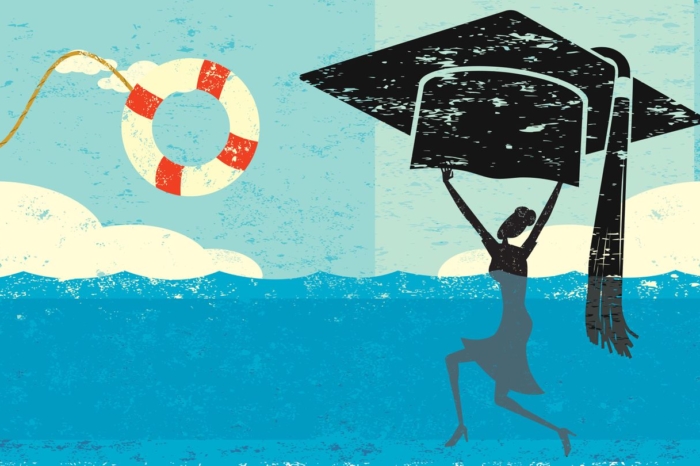A truly progressive student loan policy
This op-ed originally appeared in the Boston Globe. It was written by Pioneer’s Charlie Chieppo along with AEI’s Beth Akers.
There’s no doubt that the United States faces a student loan debt crisis. But the problem would be addressed much more effectively — and progressively — by a series of reforms targeted at those who bear the brunt of the crisis than by providing most borrowers with up to $50,000 in debt forgiveness.
The overall numbers are daunting. According to the credit reporting agency Experian, 1.65 million Americans owed about $1.57 trillion in student loan debt in 2020, making it the second-highest category of consumer debt, behind only mortgages. About 10.8 percent of borrowers were in default on nearly $120 billion in student loan debt last year, and another 2.8 million people who owe almost $123 billion have loans in forbearance.
But near-blanket loan forgiveness, such as the up to $50,000 proposed by US Senator Elizabeth Warren for households with annual incomes of less than $250,000, is like using a blunt instrument when a scalpel can fix the problem.
The Brookings Institution found that the bottom 60 percent of borrowers in terms of income would see only about a third of the benefits under Warren’s plan. The rest would go to borrowers in the top two income quintiles. Students from higher-income homes hold the majority of student debt. They tend to go to more expensive schools, are likely to borrow again for graduate or professional school, and are also more likely to earn salaries that will make repaying their loans a manageable expense.
Those who struggle the most with student debt actually tend to have less of it. Surprisingly, delinquency and default are most common among those who are less than $5,000 in debt, often because they didn’t finish college. They are the ones who would be most helped by a series of targeted reforms.
The first reform is to give each student borrower a $5,000 refundable tax credit, which would wipe out the debt of the majority of those for whom student loan debt imposes the greatest burden.
Next, the federal Pell Grant program, which provides up to $6,495 annually for the neediest students on a semester-by-semester basis, should be replaced with a college savings account. Under the savings account, students would receive an upfront payment of the full amount for which they qualify for the term of their program (i.e., four years for a bachelor’s degree). Access to more grant eligibility early in their program could reduce instances of borrowing for a degree they won’t finish. Those who do drop out would be required to return the portion remaining in the savings account.
Finally, individual income-driven repayment programs cobbled together over more than 20 years should be rationalized into a single user-friendly program under which borrowers would pay a set percentage of current disposable income on a monthly basis over a fixed period — say 10-25 years. During months when their earnings are higher, borrowers would pay more; when earnings are down, they pay less. Any remaining balance would be forgiven at the end of the repayment period.
This is the heart of a truly progressive student loan policy. More benefits would flow to those who invested in post-secondary education, took on debt to do so, but didn’t land a high-paying job — or didn’t have one for the bulk of their careers.
Such an approach improves social mobility by making higher education more accessible to low-income individuals but doesn’t bail out the wealthy, who are more than capable of paying back their student loans.
The targeted approach is also preferable to more generalized loan forgiveness for another important reason. The less targeted program would probably encourage future students to borrow more than they would have otherwise and attend more expensive schools. The surge in demand would then cause colleges and universities to raise prices, which would exacerbate already out-of-control inflation in the higher-education sector.
Targeted reforms would focus help on the families and individuals who are actually struggling with student loan debt and improve social mobility. It would achieve these goals at a lower cost to American taxpayers than debt forgiveness, and without creating incentives that would aggravate the serious inflation problem in higher education.
Beth Akers is a senior fellow at the American Enterprise Institute. Charles Chieppo is a senior fellow at Pioneer Institute, a Boston-based public policy think tank.


